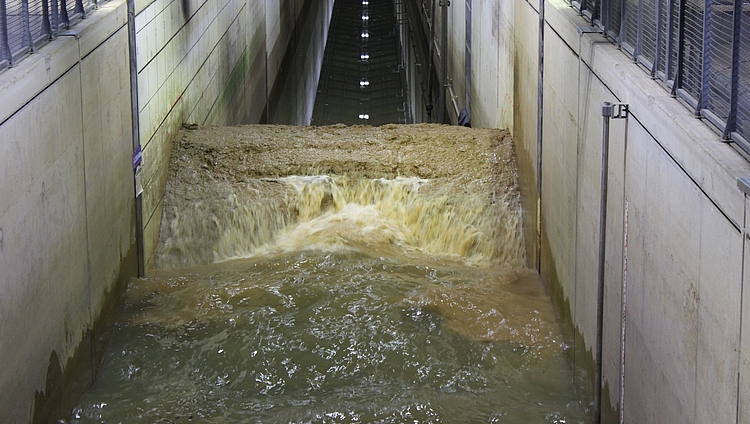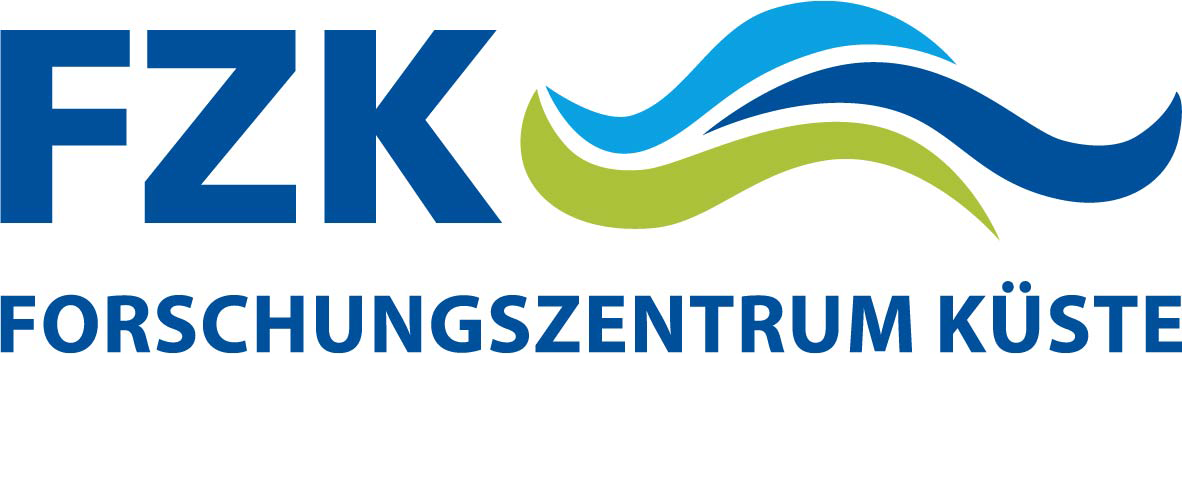Physical Model Erosion Tests on Loam Material under Wave Action
 © Forschungszentrum Küste
© Forschungszentrum Küste
| Leitung: | Dr.-Ing. Stefan Schimmels |
| E-Mail: | Schimmels@fzk.uni-hannover.de |
| Team: | Matthias Kudella, Stefan Schimmels, Franziska Staudt, Moritz Thom |
| Jahr: | 2017 |
| Laufzeit: | 02.01.2017 - 12.04.2017 |
Scientific Background and Objectives
The construction of new clay-covered sand dikes or the retrofitting of existing dikes faces the problem of limited resources of suitable clay. Furthermore, due to limited resources transport from natural clay deposits to the construction site becomes an important cost factor. Therefore attempts are made to replace the clay by other suitable materials. However, as the quality of the loamy material is presumably lower compared to clay and no guidelines are available how to assess its stability against erosion, erosion tests on selected materials were performed at the Large Wave Flume (Großer Wellenkanal, GWK) of Forschungszentrum Küste (FZK).
Objectives of the experiments
The objective of the study was to determine the erosion stability of different soil materials under wave attack in order to check their suitability for dike construction. The tests were done on a dike with a 1:2 seaward slope, which was eroded for six hours by irregular waves. Six different materials were tested in total and the design wave conditions were a JONSWAP spectrum with Hs = 0.40 m and Tp = 3.0 s.
Model setup and measurements
A fixed artificial foundation with a height of 2.25 m was installed prior to the tests and the loam dikes were built on top of this foundation. To keep the area behind the dike dry stop logs inside the foundation were installed to provide a vertical sealing, while the horizontal sealing was provided by the dike material itself. In order to keep the water level constant during the tests, water flowing to the back side of the dike, e.g. by overtopping or rest leakage, was pumped back to the front side with a pump installed at the “landward” toe of the whole structure.
The crest height of the loam dike for the first test series was 1.75 m above the foundation structure, resulting in a crest height of 4.0 m above flume bottom. With a freeboard for the tests of 1 m the water level was 3.0 m. For the second test series the crest height of the loam dike was increased to 4.50 m. The water level was adapted accordingly to 3.5 m in order to keep the freeboard of 1.0 m. The crest length for both test series was set to 1 m.
The generated waves were recorded with 4 wave gauges located approximately in the middle between the wave maker and the structure (x = 50 - 60 m) in order to determine the incident wave conditions by a reflection analysis. During the tests the dike was monitored with a synchronized video camera fixed at the flume wall and erosion was continuously measured along two profiles at y = 2.50 m (middle axis of the flume) and y = 1.45 m by 2D laser scanners (SICK LMS511) located above the seaward slope of the dike. As the laser scanner cannot penetrate through the water the submerged part of the dike, where most erosion is likely to occur, cannot be observed during the tests. Therefore the experiments were interrupted regularly to lower the water level and take a 3D scan of the whole dike with a 3D laser scanner (FARO Focus 3D).






